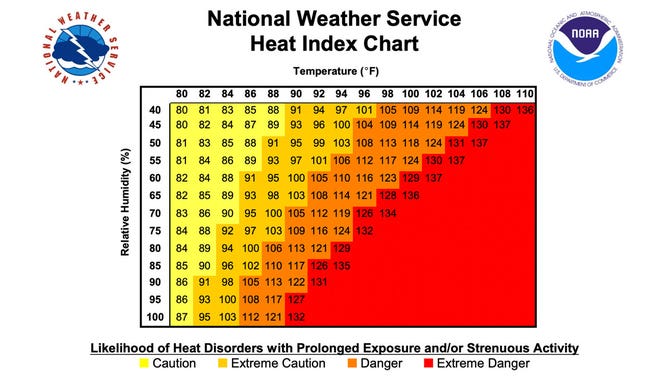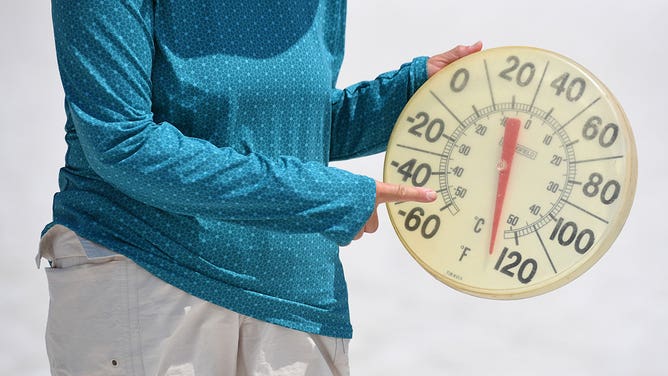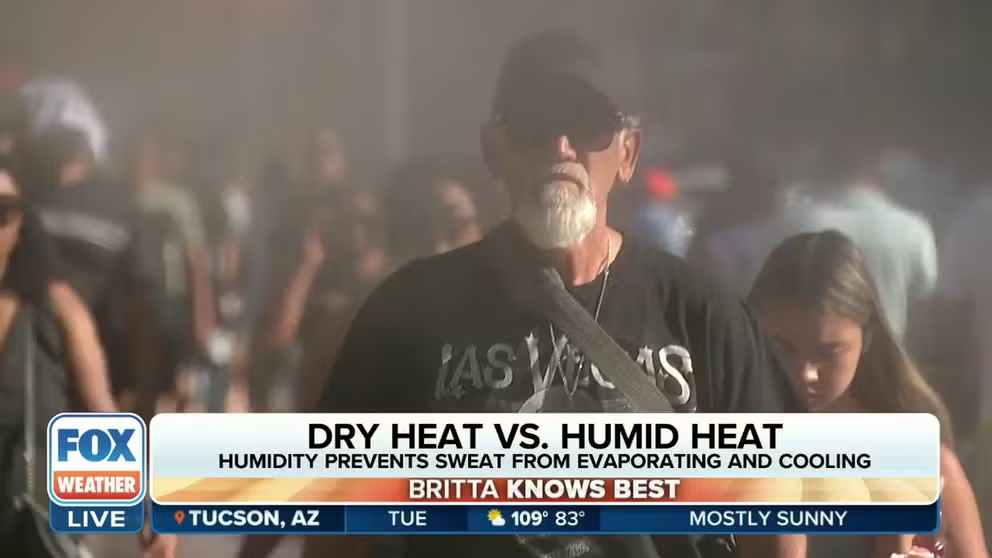What does 'dry heat' mean?
Heat is serious regardless of the humidity levels.
What's worse dry heat or humid heat?
FOX Weather Meteorologist Britta Merwin explains why the combination of humidity and heat can be deadly. When it's humid your sweat cannot evaporate which prevents your body from cooling.
It’s one of the great rivalries in the world of weather — dry heat vs. humid heat.
People in the Southern and Eastern U.S. are familiar with muggy summers that cause you to break out into an immediate sweat whenever you step outside. However, people in the desert Southwest know dry summers filled with triple-digit weather are so hot you can cook the proverbial egg on the sidewalk.
"At least it’s a dry heat," you might say. So, is it really a "dry heat," and does that make a difference in your ability to handle the hot weather? The answers are mixed.
What it means
When someone uses the phrase "dry heat," they’re using it to describe a couple of different things. First, they’re referencing the amount of water vapor that’s in the air. This is known as humidity. Second, they’re referring to the way their body reacts to the heat.
In extremely humid climates, being covered in sweat after being outside for even a short amount of time is relatively common. In drier climates, a person may rarely break out into a sweat when outside. That’s because of the difference in the amount of water vapor that is in the air.
Sweating and the heat index
Sweating is our body's cooling system. In drier climates, the sweat quickly evaporates from the surface of our skin, taking with it our body's excess heat. In humid climates, the air is already full of water vapor. So, the sweat collects on the skin instead of evaporating. This makes it harder for the body to cool down.
People who live in humid climates of the U.S. are all too familiar with the heat index. You might have heard your local weatherman refer to this as the "feels like" temperature. This scale takes into account how much humidity there compared to the temperature and how your body perceives the heat. Basically, the more humidity that is packed into hot air, the harder your body has to work to keep you cool.

While not being drenched in sweat sounds like a good thing, it can make it hard for you to know when you’ve had enough of the great outdoors on hot summer days. Because there’s no sweat collecting on your skin, there’s no visual (or olfactory) reminder that you may be overdoing it. It also means that you're sweating out all the water inside your body that it needs to keep you cool at a much faster rate. This can cause heat-related illnesses to quickly develop.
Triple-digit temps
Another thing you may notice about humid climates versus dry climates is that summertime temps can be very different. This is also because of the difference in the amount of water vapor in the air.
The more water vapor that is packed into the air, the less heat it can hold. This means that in more humid areas, temperatures may rarely climb into the triple-digits. However, heat index values will regularly reach triple-digit levels. In drier climates, triple-digit temperatures are a normal occurrence, but the heat index value will rarely exceed the actual temperature.

Margaret Owen, of California, holds a thermometer at Badwater Basin on July 11, 2021, in Death Valley National Park, California.
(David Becker/Getty Images)
Bottom line
"Dry heat" is a real thing. However, just because you sweat less doesn’t mean your risk of suffering from heat-related illnesses is reduced. Whether you live in a humid climate or a desert, take heat seriously.
Whenever a heat wave is forecast, the National Weather Service advises people to drink lots of water, take frequent breaks in the shade or A/C and wear light-weight and light-colored clothing.
